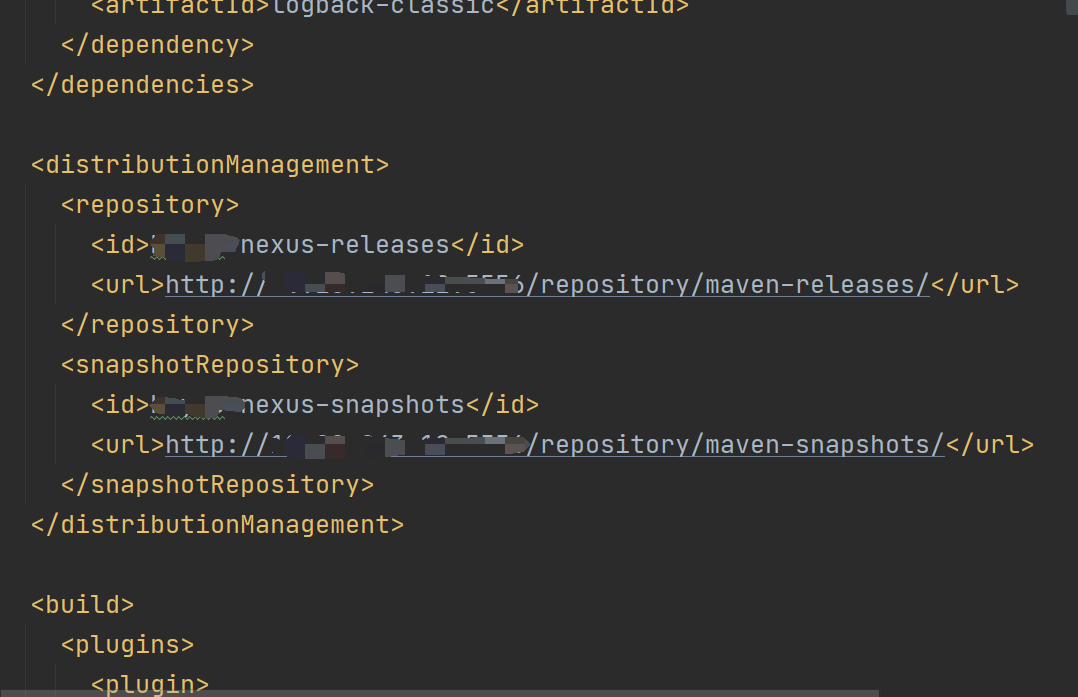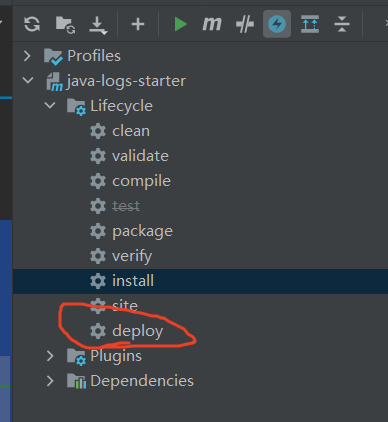maven私服配置全过程
10人参与 • 2025-06-10 • Java
使用nexus作为 公司maven私服
可以使用docker快速安装一个
maven 私服setttings配置
<?xml version="1.0" encoding="utf-8"?>
<settings xmlns="http://maven.apache.org/settings/1.2.0"
xmlns:xsi="http://www.w3.org/2001/xmlschema-instance"
xsi:schemalocation="http://maven.apache.org/settings/1.2.0 https://maven.apache.org/xsd/settings-1.2.0.xsd">
<!-- localrepository
| the path to the local repository maven will use to store artifacts.
|
| default: ${user.home}/.m2/repository
<localrepository>/path/to/local/repo</localrepository>
-->
<localrepository>d:\dev\mavenrepository</localrepository>
<!-- interactivemode
| this will determine whether maven prompts you when it needs input. if set to false,
| maven will use a sensible default value, perhaps based on some other setting, for
| the parameter in question.
|
| default: true
<interactivemode>true</interactivemode>
-->
<!-- offline
| determines whether maven should attempt to connect to the network when executing a build.
| this will have an effect on artifact downloads, artifact deployment, and others.
|
| default: false
<offline>false</offline>
-->
<!-- plugingroups
| this is a list of additional group identifiers that will be searched when resolving plugins by their prefix, i.e.
| when invoking a command line like "mvn prefix:goal". maven will automatically add the group identifiers
| "org.apache.maven.plugins" and "org.codehaus.mojo" if these are not already contained in the list.
|-->
<plugingroups>
<!-- plugingroup
| specifies a further group identifier to use for plugin lookup.
<plugingroup>com.your.plugins</plugingroup>
-->
</plugingroups>
<!-- proxies
| this is a list of proxies which can be used on this machine to connect to the network.
| unless otherwise specified (by system property or command-line switch), the first proxy
| specification in this list marked as active will be used.
|-->
<proxies>
<!-- proxy
| specification for one proxy, to be used in connecting to the network.
|
<proxy>
<id>optional</id>
<active>true</active>
<protocol>http</protocol>
<username>proxyuser</username>
<password>proxypass</password>
<host>proxy.host.net</host>
<port>80</port>
<nonproxyhosts>local.net|some.host.com</nonproxyhosts>
</proxy>
-->
</proxies>
<!--新增仓库认证账号密码-->
<servers>
<server>
<id>nexus-releases</id>
<username>xxxx</username>
<password>xxx@xxx</password>
</server>
<server>
<id>nexus-snapshots</id>
<username>xxxx</username>
<password>xxx@xxx</password>
</server>
</servers>
<mirrors>
<mirror>
<id>alimaven</id>
<name>aliyun maven</name>
<url>http://maven.aliyun.com/nexus/content/groups/public/</url>
<mirrorof>central</mirrorof>
</mirror>
</mirrors>
<!-- profiles
| this is a list of profiles which can be activated in a variety of ways, and which can modify
| the build process. profiles provided in the settings.xml are intended to provide local machine-
| specific paths and repository locations which allow the build to work in the local environment.
|
| for example, if you have an integration testing plugin - like cactus - that needs to know where
| your tomcat instance is installed, you can provide a variable here such that the variable is
| dereferenced during the build process to configure the cactus plugin.
|
| as noted above, profiles can be activated in a variety of ways. one way - the activeprofiles
| section of this document (settings.xml) - will be discussed later. another way essentially
| relies on the detection of a system property, either matching a particular value for the property,
| or merely testing its existence. profiles can also be activated by jdk version prefix, where a
| value of '1.4' might activate a profile when the build is executed on a jdk version of '1.4.2_07'.
| finally, the list of active profiles can be specified directly from the command line.
|
| note: for profiles defined in the settings.xml, you are restricted to specifying only artifact
| repositories, plugin repositories, and free-form properties to be used as configuration
| variables for plugins in the pom.
|
|-->
<!--新增私有仓库-->
<profiles>
<profile>
<id>nexus</id>
<repositories>
<repository>
<id>nexus-releases</id>
<url>http://nexus地址:端口/repository/maven-releases/</url>
<releases><enabled>true</enabled></releases>
<snapshots><enabled>false</enabled></snapshots>
</repository>
<repository>
<id>nexus-snapshot</id>
<url>http://1http://nexus地址:端口/repository/maven-snapshots/</url>
<releases><enabled>false</enabled></releases>
<snapshots><enabled>true</enabled></snapshots>
</repository>
</repositories>
<pluginrepositories>
<pluginrepository>
<id>nexus-release</id>
<url>http://http://nexus地址:端口/repository/maven-releases/</url>
<releases><enabled>true</enabled></releases>
<snapshots><enabled>false</enabled></snapshots>
</pluginrepository>
<pluginrepository>
<id>nexus-snapshot</id>
<url>http://http://nexus地址:端口/repository/maven-snapshots/</url>
<releases><enabled>false</enabled></releases>
<snapshots><enabled>true</enabled></snapshots>
</pluginrepository>
</pluginrepositories>
</profile>
</profiles>
<!-- 激活nexus profile -->
<activeprofiles>
<activeprofile>nexus</activeprofile>
</activeprofiles>
<!-- activeprofiles
| list of profiles that are active for all builds.
|
<activeprofiles>
<activeprofile>alwaysactiveprofile</activeprofile>
<activeprofile>anotheralwaysactiveprofile</activeprofile>
</activeprofiles>
-->
</settings>maven项目 pom配置

<distributionmanagement>
<repository>
<id>nexus-releases</id>
<url>http://nexus地址:端口/repository/maven-releases/</url>
</repository>
<snapshotrepository>
<id>nexus-snapshots</id>
<url>http://nexus地址:端口/repository/maven-snapshots/</url>
</snapshotrepository>
</distributionmanagement>测试效果
maven deploy



引用,在项目的pom里添加对应依赖即可
总结
以上为个人经验,希望能给大家一个参考,也希望大家多多支持代码网。
赞 (0)
您想发表意见!!点此发布评论






发表评论